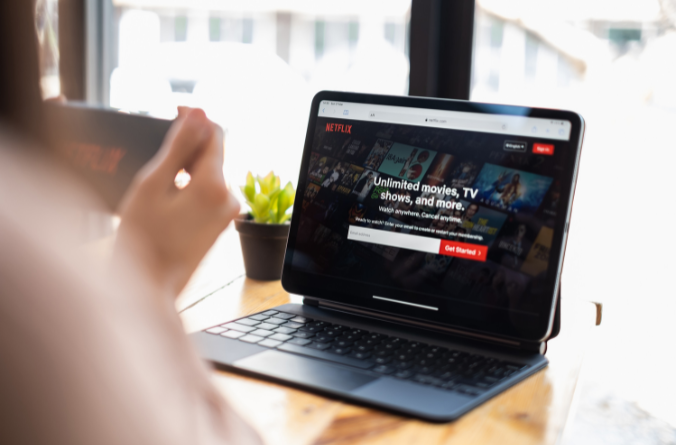What does the day in the life of a highly successful recruitment consultant in Singapore look like?

We caught up with Jasmine Poh, Senior Recruitment Consultant in Commercial Shipping, at Faststream Recruitment to get an insight into her busy day in recruitment.
8 am: My day begins with taking my son to school. The traffic in Singapore is hectic, so I usually reach the office between 8:30 and 9 am. On Mondays and Fridays, I like to get a coffee before I start work. It helps me feel energised and rewarded for the week.
8:30 am: After arriving at the office, I check the sticky note where I wrote my priorities for the day. I highlight the top three tasks that I need to do. They might include sending out CVs, making calls, or contacting a candidate. However, the first thing I usually do is to look through my emails and check my calendar for any appointments or meetings that I have to plan and prepare for.
9:30 am: In the morning I like to access our database and look at the dashboard. It shows me what I need to focus on that day. Different columns indicate who is in the interviewing stage and who is not. I use this information to decide how to make my day more productive.

10:30 am: At this time, more people in Singapore are active, especially HR Managers. I start calling them and following up with them. Sometimes, I have to work with candidates and clients from different regions and time zones, so I have to adjust to that.
11:30 am: I take an early lunch to avoid the lunch crowd so I can also phone candidates who can talk on their lunch break which is more convenient for them. On Fridays, I like to eat out, but on other days, I eat in our pantry. It’s comfortable and I can watch Netflix and relax. It’s good to have some time to enjoy my lunch and calm down after talking to people all day. Sometimes, I go to the gym nearby. We have a wellness benefit at Faststream Recruitment.

12:30 pm: I will contact those who are available during lunch breaks and those key candidates who prefer to talk during the lunch hour peak time.
2 pm: My daily tasks vary depending on the day. I use this time to check CVs, do business development, or search for more opportunities.
3 pm: I try to arrange meetings with clients or candidates at 3 pm. Sometimes, we have video calls with them to catch up or prepare for interviews.
4 pm: I will plan for tomorrow and see what the processes are. I will also decide what to focus on first. As we have a global presence, sometimes we use this time to touch base with clients and/or colleagues for any global updates and collaboration. Then, I will do some more business development and make my sticky note to-do list.

5:30 pm: After work, I pick up my son and have dinner. Sometimes, I will meet up with my colleagues for food and drinks, especially on Fridays.
If you're interested in a career with Faststream, please get in touch by filling out the form below.
Latest Insights
View All InsightsMaritime Workforce Forecast 2026: What It Means for Your People Strategy
What will your maritime workforce look like in 2026, and are you ready for it? That’s the question behind our new Maritime Workforce Forecast 2026: Building a Human-Plus Maritime Workforce in an AI...
What is one skill you want to learn in 2026?
The start of a new year often brings a renewed mindset and fresh aspirations. Many people set resolutions, only to feel the pressure of maintaining big commitments. When goals become overwhelming,...
Employer of Record (EOR) – Myths vs Facts for Maritime Businesses
Employer of Record (EOR) solutions are becoming a key part of maritime workforce strategy, but misconceptions still surround what they actually do. Some see EOR as a quick fix for hiring, while oth...
Why Great Maritime Candidates Go Unnoticed, and How to Change That in 2025
In the competitive maritime sector, even highly qualified candidates can go unnoticed. A well-presented application and strong visibility to recruiters can make a real difference in your job searc...
Regulate Your Hiring Spend with Employer of Record (EOR)
Rising costs, unpredictable project cycles, and global workforce shortages are pushing maritime leaders to rethink how they hire. Balancing financial control with the need for flexibility is no sma...
10 Reasons Maritime Businesses Are Turning to Employer of Record (EOR) Services
From crew mobility to compliance across borders, maritime businesses face unique HR challenges. Managing an international workforce across ship management, crewing, and shore-based operations often...
The Superintendent Employment Report 2025: What You Need to Know
The superintendent profession is changing fast.To understand how superintendents feel about their work, rewards, and prospects, Faststream Recruitment surveyed over 1,000 professionals across all m...
Top 5 Human Skills for Maritime Careers in 2025
Human skills, often called “soft skills”, have developed over the last 10 years, reflecting the unique context of the maritime and shipping industries. Due to global trade, onboard operations, reg...
Build, Buy, Borrow or Bot: What Is Your Maritime Workforce Strategy?
The maritime and shipping sectors are undergoing one of their most significant shifts in decades. Decarbonisation, digitalisation, and demographic change are reshaping the way businesses operate an...
Why Passive Candidates Are the Key to Senior Hires in Maritime
Hiring senior maritime talent isn’t about posting a job and waiting for applications. The reality is that the very best leaders are rarely looking. They are already delivering results, leading team...
Inside the Minds of Maritime’s Top Executives
The highly anticipated Senior Maritime Executive Report 2025 is here, and it offers a fascinating glimpse into the realities facing the industry’s top leaders. Produced internally by Faststream Rec...
Succession Planning in the Maritime Industry: Why It Can’t Wait
The maritime industry is on the cusp of a leadership shift. Many of today’s senior executives are edging closer to retirement, according to our Senior Maritime Executive Survey 2025, while the next...












